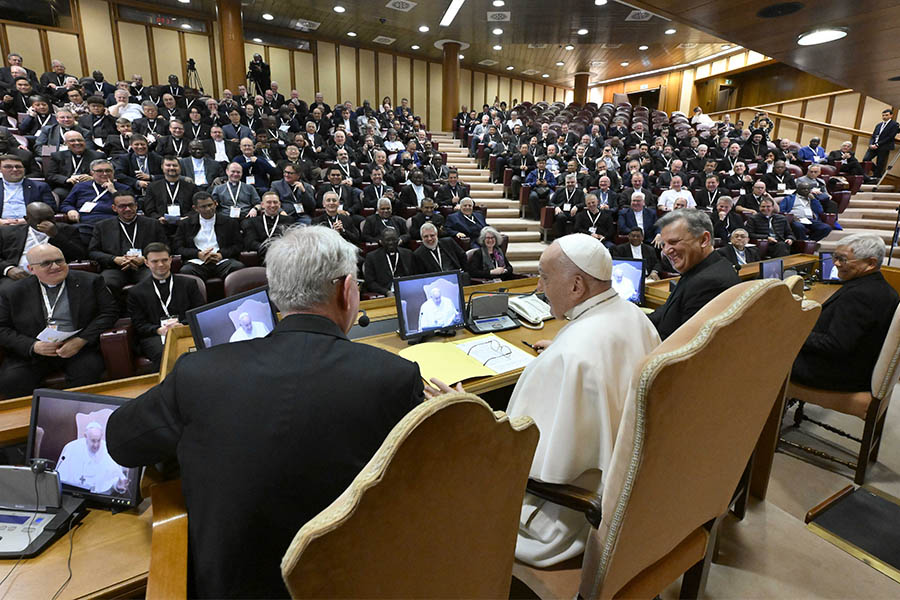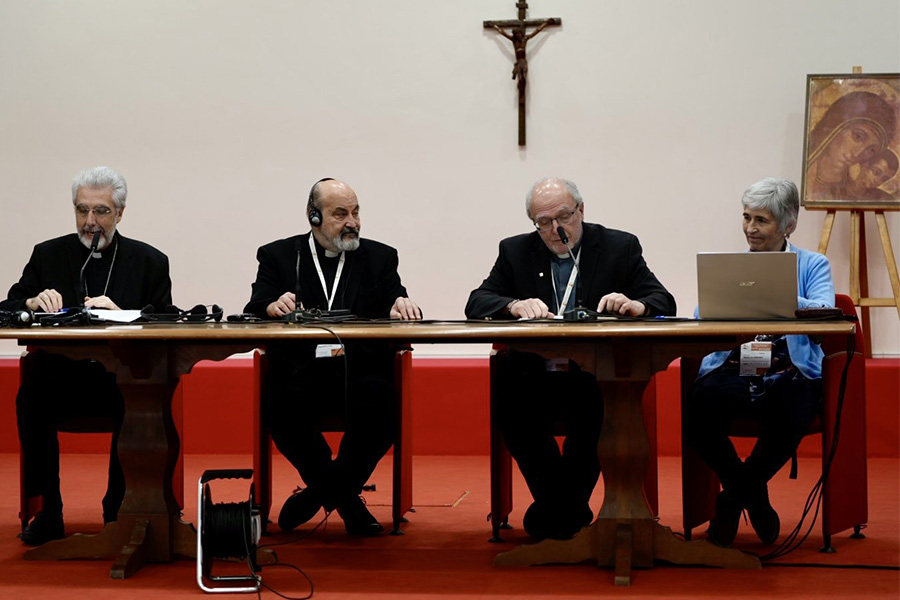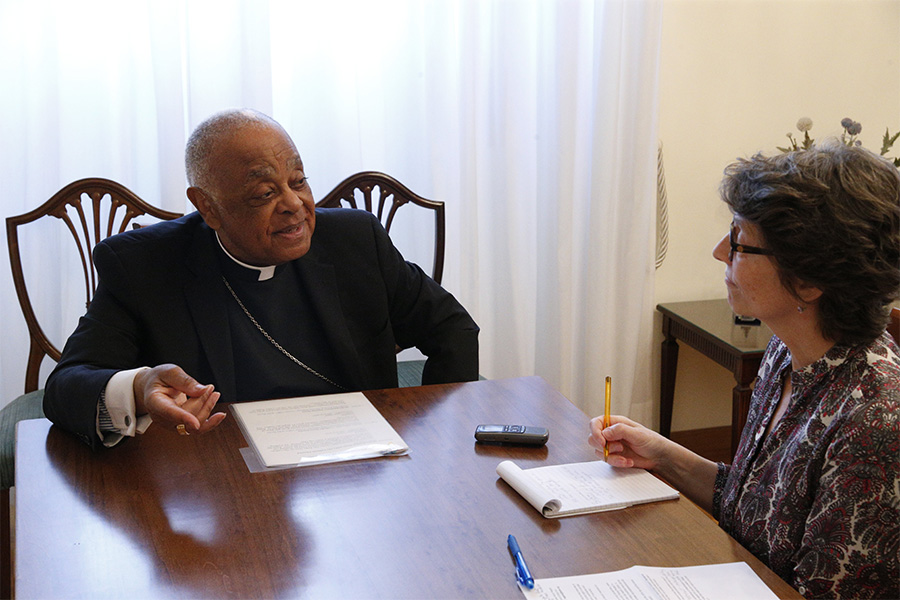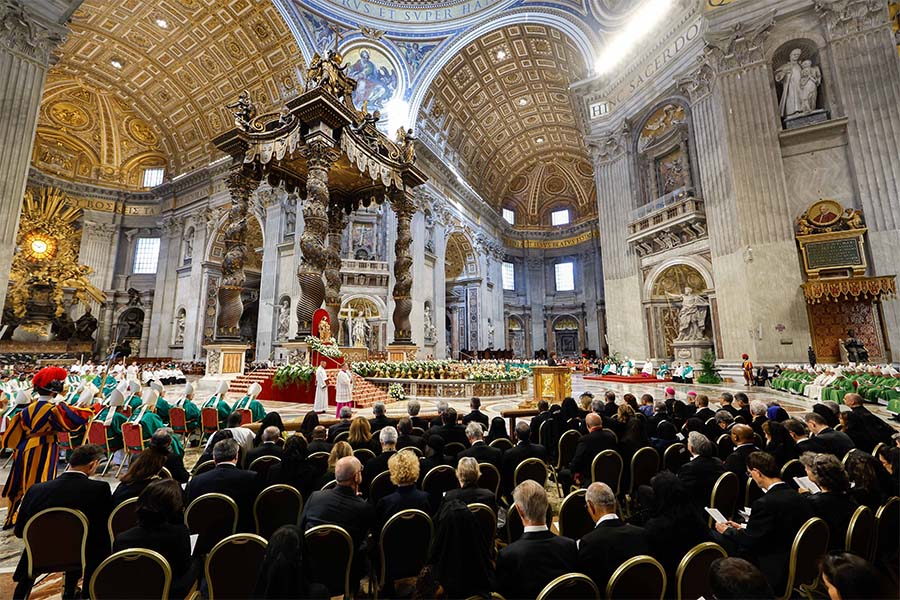VATICAN CITY (CNS) — The first assembly of the synod on synodality demonstrated that an effective way to break the chains of clericalism and highlight the voices and experience of women in the church is to begin by listening and praying together before discussing issues, said two synod participants.
Clericalism exists “because we do not listen to one another; the clergy do not listen to women or the laity,” said Momoko Nishimura, a consecrated laywoman from Japan who served as one of Pope Francis’ delegate presidents at the assembly in October.
Nishimura and Susan Pascoe, an Australian who served as an expert and facilitator at the synod, jointly inaugurated the English-language program of the World Union of Catholic Women’s Organizations’ School for Synodality Feb. 29. Separate webinars were offered in Spanish and French as well.
The work of the synod assembly in October was built around “conversations in the Spirit,” a process through which every person in a small group — usually 10 or 11 people — speaks on a topic for four minutes without interruption. Then there is a pause for prayer. Then each person has three minutes uninterrupted to respond to what struck him or her about what others shared in the first round. After another pause for prayer, an open discussion begins.
“This is a very synodal way of sharing,” Nishimura said, and one that forces participants to listen and to pray before reacting.
“It is also a very effective way that all the people of God can be involved in the decision making” that is part of a commitment to promote shared responsibility in the church, she said.
In preparation for the second assembly of the synod, scheduled for Oct. 2-27, dioceses and bishops’ conferences have been asked to hold further listening sessions and consultations focused on the synthesis report of the first assembly and the question, “How can we be a synodal church in mission?” Bishops’ conferences are asked to send a summary of the discussions to the Vatican synod secretariat by May 15.
Pascoe told webinar participants that the synthesis report insisted that women and men in the church “are clothed with the same baptismal dignity,” that women make up the majority of people in the pews and they usually are the first to transmit the faith to a new generation.
Synod members said, “Let’s stop talking about women as a problem and instead promote a culture where women and men dialogue together,” she said.
To move the process forward, Pascoe said, women need to advocate in their parishes, dioceses and bishops’ conferences for “more equal participation of women,” and they should do so using Scripture, tradition and canon law to support their arguments.
They should seek ways to be involved in and contribute to the preparation for the second assembly of the synod, contacting their diocese or bishops’ conference if an open invitation has not already been extended, she said.
Religious sisters and lay women should form closer bonds, Pascoe said, “because we are stronger together.”
And “find male champions,” she said. “Some of the bishops and cardinals at the assembly, they can be the champions of women in the church.”
Catholic women need to push for more opportunities for education in theology, pastoral practice, spirituality, canon law and administration, she said. “Access to formation increases the options available to women in the church, in different ministries, in pastoral work and decision-making roles, and that’s very important.”
Sister Maria Cimperman, a member of the Religious of the Sacred Heart of Jesus and professor of Catholic theological ethics at Chicago’s Catholic Theological Union, and Sheila Pires, communications officer for the Southern African Catholic Bishops’ Conference, shared their synod experiences in the second English webinar Feb. 29.
Through the conversations in the Spirit, Sister Cimperman said, “I saw firsthand that another way forward is possible — beyond division, beyond polarization, that there is a way that we can engage, bringing our whole selves prayerfully, respectfully, with depth and discerning together.”
With 11 synod members at each table, she said, each member “spoke for four minutes and listened for 40. Things change when you do that.”
While only about 15% of the synod members were women, Sister Cimperman said, more than 80% of the synod members approved the section of the synod synthesis that said, “It is urgent to ensure that women can participate in decision-making processes and assume roles of responsibility in pastoral care and ministry.”
“It was clear,” she said, “women do not want to be an object or ‘the problem,'” but want to offer their gifts to the church and its mission.
Pires said both the synod assembly and safeguarding courses she has taken have emphasized that “we need to be a church that listens more.”
“If we are a church that practices conversations in the Spirit, that has spaces for dialogue,” she said, “a lot can be achieved.”
On the issue of women’s ordination to the diaconate, she said, synod members were clear that it is not a matter of “competition” between women and men, but a desire to prayerfully discern God’s will for the church and the best ways to provide pastoral care to people in need.
Read More Synodality
Copyright © 2024 Catholic News Service/U.S. Conference of Catholic Bishops







